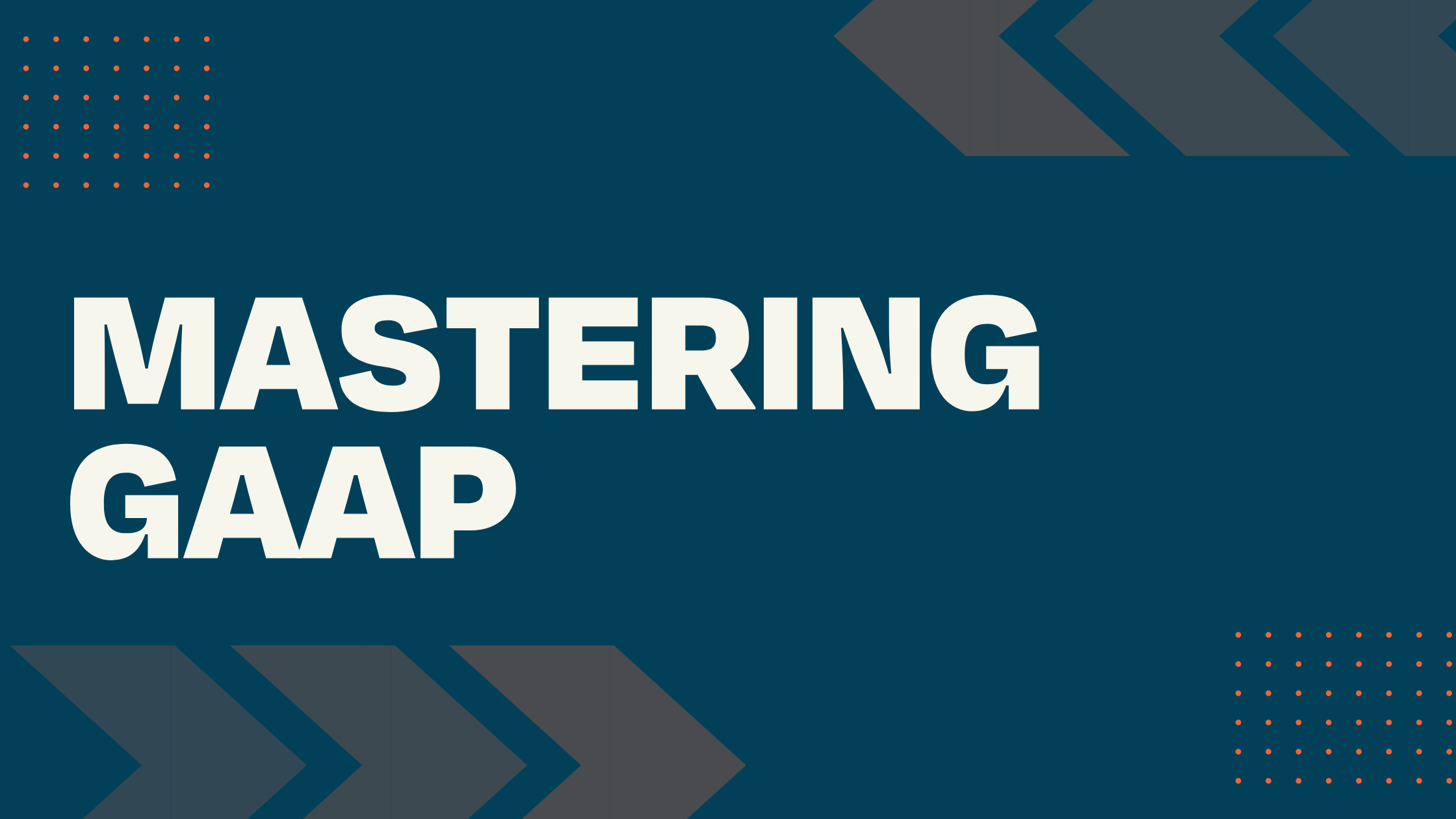Complete Guide to SaaS Accounting: Strategies for Financial Success
If you’re running a SaaS company, you already know that managing finances isn’t as straightforward as it is for traditional businesses. The...
Imagine this: You’re the founder of a thriving SaaS company. Your product is flying off the virtual shelves, customers are singing your praises, and your team is celebrating wins left and right. But when it’s time to report your financials, you find yourself grappling with the question: How exactly do you recognize all this revenue you’re generating?
If this scenario sounds familiar to you, you’re not alone. SaaS revenue recognition is a complex area that challenges even the most seasoned financial professionals. At Accounting Prose, we’ve seen firsthand how this intricate process can keep founders and finance teams up at night.
But there’s good news: With the right approach and expertise, you can navigate these complexities with confidence. In this comprehensive guide, we’ll break down the key principles of SaaS revenue recognition, share best practices honed from years of experience, and offer insider tips to help you avoid common pitfalls.
Whether you’re a seasoned CFO or a first-time founder, you’ll walk away with practical insights to elevate your SaaS financial reporting game and ensure your SaaS company stays compliant and financially transparent. Let’s dive in!
Essential Takeaways
|
Understanding revenue recognition for SaaS is important for adhering to SaaS accounting standards and ensuring financial accuracy. But what is revenue recognition? At its core, SaaS revenue recognition is the process of determining when and how to record revenue from your subscription-based services.
It’s not just about when the cash hits your bank account—it’s about aligning your reported revenue with the actual delivery of your service over time.
Why is this so important for SaaS companies? Well, unlike traditional businesses that sell physical products, SaaS companies often receive payment upfront for services delivered over an extended period.
This creates a unique challenge: how do you accurately reflect your financial performance when there’s a time gap between payment and service delivery?
Here’s where it gets interesting (and a bit tricky). Recognizing revenue too early can inflate your financial statements and potentially mislead investors. On the other hand, recognizing too late might understate your company’s performance. It’s a delicate balance, and getting it right is crucial for maintaining financial compliance and credibility.
For example, if a customer pays $1,200 upfront for an annual subscription, the company should recognize $100 of revenue each month as the service is provided. This method aligns revenue recognition with the actual delivery of the service, ensuring financial statements accurately reflect the company’s performance.
Now that we’ve established the importance of revenue recognition, let’s explore the key principles that guide this process of SaaS companies. Understanding these principles is like having a roadmap for your financial reporting. Let’s break them down according to the 5-step model for ASC 606 revenue recognition:
Identify the Contract: This goes beyond just having a signed agreement. Both parties need to approve and commit to the contract. For example, if you offer a 30-day free trial that automatically converts to a paid subscription, the contract isn’t truly established until the trial period ends and the customer decides to continue.
Identify Performance Obligations: Break down your offerings into distinct services or products. If you’re offering a basic subscription with add-on features, each of these might be considered a separate performance obligation.
Determine the Transaction Price: This isn’t always as straightforward as it seems. Consider factors like discounts, variable pricing, and the time value of money for long-term contracts.
Allocate the Transaction Price: If you have multiple performance obligations, you’ll need to allocate the total contract value across these obligations based on their relative standalone selling prices.
Recognize Revenue: Here’s the big one—recognize revenue as you satisfy each performance obligation. For most SaaS companies, this means recognizing revenue ratably over the subscription period (1).
Accounting Prose tip: When dealing with multi-year contracts, consider using the “time value of money” concept. This involves discounting future payments to their present value, which can significantly impact your revenue recognition.
These five principles may seem complex at first, but they form the foundation of accounting principles for SaaS companies and are essential for accurate financial reporting.
By carefully applying these principles to your financial processes, you’ll be able to present a clear and truthful picture of your company's financial health. This accuracy is invaluable, particularly during growth phases or when seeking funding.
Now that we’ve covered the principles, let’s talk about putting them into practice. Here are some battle-tested strategies to ensure your revenue recognition is on point:
Implement a Robust Contract Management System: Your contracts are the foundation of revenue recognition. Use a system that allows you to easily track key terms, dates, and performance obligations.
Automate, Automate, Automate: Manual processes are prone to errors. Leverage software that can automatically recognize revenue based on your contract terms and delivery schedule.
Regular Reconciliation: Don’t wait until the end of the quarter to reconcile your recognized revenue with your cash receipts. Doing this regularly can help catch discrepancies early.
Document Your Policies: Create clear, written policies for how you handle various revenue recognition scenarios. This ensures consistency and makes audits go much more smoothly.
Stay Educated: Revenue recognition standards evolve. Make sure your finance team stays up-to-date with the latest guidelines and best practices.
Accounting Prose tip: We help our clients implement contract management systems that integrate seamlessly with their revenue recognition processes, ensuring no detail is overlooked.
Try this: Create a Revenue Waterfall report to visually track how deferred revenue converts to recognized revenue over time. This gives you a clearer picture of your financial future.
Implementing these best practices in SaaS revenue recognition can significantly improve your financial reporting accuracy and compliance. Remember, effective revenue recognition isn’t just about meeting regulatory requirements—it’s about providing a clear, trustworthy picture of your company’s finances that your stakeholders can rely on.
Even the savviest SaaS companies can stumble when it comes to revenue recognition. Here are some common mistakes and how to sidestep them.
This is a big no-no. Remember, you should recognize revenue as you deliver the service, not when you receive payment.
If a customer upgrades or downgrades their subscription, it can impact your revenue recognition. Make sure your processes account for these changes.
These can be tricky. Be sure to consider the time value of money and potential price increases in future years.
If you offer setup or implementation services, these might need to be recognized separately from the subscription revenue.
Applying different recognition methods to similar contracts can raise red flags with auditors. Consistency is key.
To avoid these pitfalls, it’s important to stay vigilant and proactive in your revenue recognition practices. By understanding and addressing these common mistakes, you can ensure your financial statements are accurate and compliant. This will help you build trust with stakeholders and set a solid foundation for your company’s financial growth.
Trying to manage revenue recognition manually can be overwhelming and prone to errors, making technology an essential part of your revenue recognition process. Here’s why:
Automation Reduces Errors: Software can apply your recognition rules consistently across thousands of contracts, minimizing human error.
Real-Time Insights: With the right tools, you can get up-to-the-minute views of your recognized and deferred revenue, helping with forecasting and decision-making.
Compliance Support: Many revenue recognition software solutions are designed with ASC 606 and IFRS 15 compliance in mind, helping you stay on the right side of the regulations.
Scalability: As your business grows, your revenue recognition needs become more complex. The right technology can scale with you, handling everything from simple subscriptions to multi-element arrangements.
Some popular tools in this space include Zuora, Maxio, and Chargebee. While Stripe is primarily a payment processor, they also help businesses streamline accrual accounting and automate compliance with ASC 606 and IFRS 15 standards (2).
The best tool for you depends on your specific needs and integrations with your existing systems. By using tools like these, you can ensure that your revenue recognition processes are accurate, efficient, and compliant.
Compliance might not be the most exciting topic, but it’s critical for maintaining the trust of investors, auditors, and regulators. Here’s how to stay on track:
Understand ASC 606 and IFRS 15: These are the current standards governing revenue recognition (2). Make sure you and your team are well-versed in their requirements.
Regular Audits: Don’t wait for your annual audit to check your compliance. Conduct regular internal audits to catch and correct issues early.
Seek Expert Help: Revenue recognition can be complex, especially as your business grows. Don’t hesitate to bring in experts like Accounting Prose to ensure you’re on the right track.
Document Everything: Keep detailed records of your recognition policies, judgments, and calculations. This will be invaluable during audits and financial reviews.
Staying up-to-date with the latest SaaS accounting standards is crucial for maintaining SaaS financial compliance. Regularly reviewing your practices, seeking expert guidance, and maintaining thorough documentation can help you navigate the complexities of compliance effectively.
Try this: Set up a quarterly internal audit process. This helps catch and correct issues early, preventing major problems during your annual audit.
ASC 606 provides businesses with a universal framework for recognizing revenue from customer sales. IFRS 15 is the international standard for revenue recognition. Both are designed to ensure that revenue is recognized in accordance with the actual delivery of goods or services, preventing premature or delayed revenue recognition.
Navigating the intricacies of SaaS revenue recognition might seem daunting, but it’s an important skill for any growing SaaS business. By understanding the principles, implementing best practices, leveraging the right technology, and staying compliant with standards, you are setting your company up for financial success and credibility.
For a comprehensive overview of SaaS accounting strategies, read our Complete Guide to SaaS Accounting.
Remember, accurate revenue recognition isn’t just about following rules—it’s about providing a true and fair view of your company’s financial performance. It builds investor confidence, helps you make smart decisions, and drives your business forward.
Ready to take your SaaS financial reporting to the next level? At Accounting Prose, we specialize in helping SaaS companies navigate the complexities of revenue recognition and financial compliance.
From setting up reliable systems to providing ongoing support, we’re here to ensure your financials are always accurate, compliant, and audit-ready. We also offer outsourced accounting for startups to help streamline your financial processes.
Don’t let revenue recognition keep you up at night. Let’s make your SaaS finances as impressive as your product.
References:
Stripe. (Updated June 4, 2024). The ASC 606 How-To Guide: Revenue Recognition in Five Steps. Retrieved from https://stripe.com/resources/more/asc-606-how-to-guide
FASB. (2014). IASB and FASB Issue Converged Standard on Revenue Recognition. Retrieved from https://www.fasb.org/page/getarticle?uid=fasb_NewsRelease05-28-14Body_0228221200

If you’re running a SaaS company, you already know that managing finances isn’t as straightforward as it is for traditional businesses. The...

1 min read
GAAP Accounting, or Generally Accepted Accounting Principles, is a crucial framework that governs corporate accounting and financial reporting in the...

As a business owner, it's essential to understand and calculate your burn rate. Understanding this metric is critical for gauging the fiscal health...
